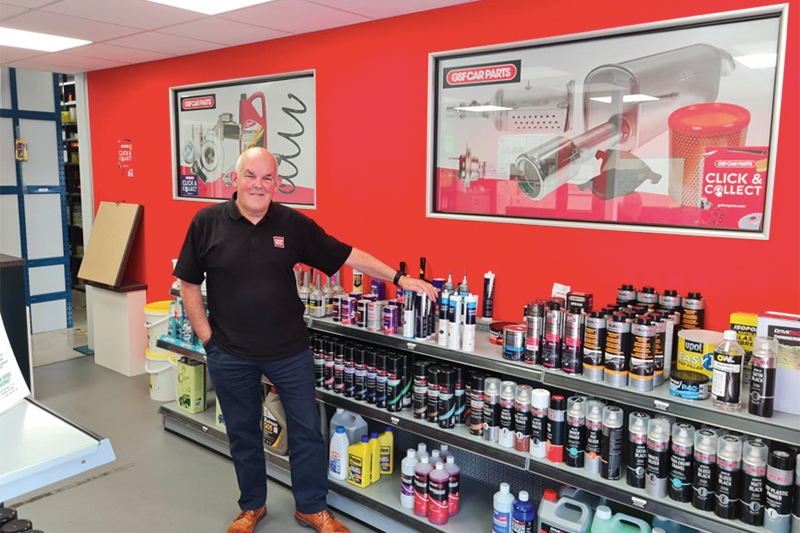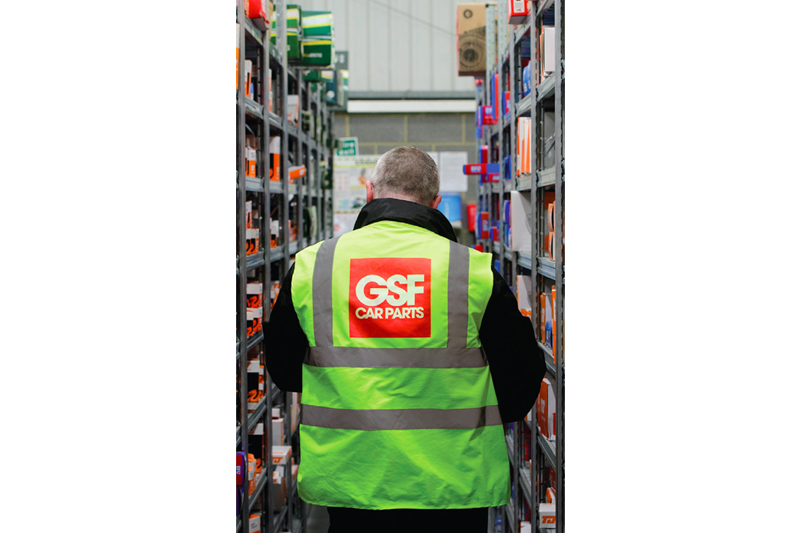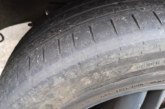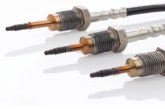GSF divisional director shares his motor factor journey

Simon McMullen is a divisional director for GSF Car Parts, responsible for the national motor factor’s branches in the South West territory. With 40 years under his belt, he’s got plenty of stories and insights to share – here’s the first of our two-part interview.
Q. Can you describe how the motor factor industry has evolved over the past four decades, particularly in terms of processes and parts look-up?
A. “My motor factor journey started with a company called AP Autela in Bournemouth in February 1983 as a counter and warehouse assistant. This was a national motor factor owned by Automotive Products of AP Lockheed and AP Borg and Beck, for those old enough to remember!
“In early 1983, we weren’t computerised, so we were reliant on manual invoicing and manual stock control. The stock control was using a Cardex system (a large metal cabinet) with cards in it. This card showed the min/max of a product and required an admin assistant to write on the card the date, invoice number and quantity sold, leaving the net balance. Also, the same (but in reverse) for incoming stock. This card was then turned around (red background) or had a red paper clip attached to it if the stock was below the min level. This stock would then be ordered by phone (pre-fax, email and EDI) on a daily or weekly basis.
“Similarly with manual invoicing, there was no functionality for calculating gross profit. For example, this was done via calculator. In that era, it was soon drilled into us the difference between gross margin and mark-up, something I regularly advise my team.
“As with other functions, having no computers and pre-internet, our parts lookup was via physical catalogues. There were numerous current catalogues in pigeonholes around the communal counter, but there was also a lectern holding all the catalogues in one binder. This was known as the bible and usually it contained numerous handwritten comments on a page.
“As a new catalogue arrived, it was put into the bible, the old one removed and usually placed in a hallowed place for future reference if needed.
“We had no ‘Reg Look Up’ or ‘Partslink’ systems. Instead, usually the experienced ‘parts person’ was able to quote verbatim various part numbers – something I still recall myself to this day! In those days, garages appreciated a morning or afternoon delivery – opposed to hourly. Motor factors were mostly made-up of long forgotten names: GKN, Autela, Godfrey Holmes, Camberley Auto Factors, Partco. These were the major national factors with many localised independents also.”

Q. Customer service remains paramount – how has it changed in the motor factor industry over the years, and what are some key principles that have remained constant?
A. “As they do now, garages back then required the correct parts, delivered at the right time and priced competitively to allow the customer to complete the job, get that car off the ramp and bring the next one in.
“These three key areas haven’t changed in 40 years, and they are the core principles at GSF that we recognise and deliver on every day.
“However, what has changed is the required SLAs into the customer. What was once acceptable as a delivery SLA 40 years ago of two drops per day is now expected on demand. That, coupled with the increase of online ordering and general ecommerce, has changed the perceptions of both garages and us as suppliers of what is required in the modern motor factor.
“Also, many years ago, garages carried more fast-moving service and consumable lines: filters, plugs, brake pads, fan belts, wipers, oils and consumables to name a few. This meant the garage would call us to top up their stock for the next day as fairly standard practice.”

Q. What are some of the most significant challenges motor factors face today, and how do they compare to the challenges you encountered earlier in your career?
A. “Many of the key challenges are also opportunities; the diversification of the car parc and the need to ensure stocks are fully optimised in line with demand are good examples of this.
“Stock obsolescence is a major challenge, but new, emerging markets and vehicle technology also present a significant opportunity for the future. It’s imperative that motor factors constantly review their stocks to maintain supply and keep abreast of future trends, demands from their customer base and ensure customer service expectations aren’t only met, but exceeded.
“Given the forthcoming government plan to full ZEV by 2035 and the required level of 80% ZEV cars and 70% ZEV vans by 2030, this has presented as many opportunities as challenges.
“The reduction of combustion components in new vehicles means that when they enter the aftermarket, there are fewer associated products, such as engine filters, clutch and transmission, engine oil and engine components. This means we must diversify into new and emerging EVrelated products.
“Aside from EV training, compliance and accreditation, the other key factor in play is that parts will have their obsolescence brought forward as demand changes; however, many petrolheads – me included! – will still require parts to maintain our fossil-fuelled vehicles, so these need to be stocked alongside EV products.
“When I compare 1983 to 2023, we had challenges then, but of a different type. These were mostly poor operating conditions, such as a lack of PPE and entering garages that were using air lines to blow out asbestos from brake drums. I feel general trading was far simpler than opposed to now, but more labour intensive.”

Q. Could you share some insights into the impact of technology on the motor factor industry? How has it transformed operations, and what are some of the benefits and drawbacks?
A. “Over recent years, technology has gained pace, and this is only getting quicker. Obviously, there’s ecommerce and web sales, but it’s also the methods and systems we use to both order parts (and) fulfil a sale.
“EDI ordering, stock replenishment from DC to branch, our GSF trade app, the algorithms we use to maintain optimum stock levels, parts look-up platforms, data reporting: the list is endless, and this is all a part of our daily life now.
“It’s a brilliant evolution, because it allows our branch teams to focus on their customer base and develop both strong relationships and increased revenue.
“In some cases, it has reduced the need for interaction between supplier and motor factor, something I feel is still key. There’s an argument to say that these sort of systems may reduce the need for our branch teams to speak to customers, but we’re careful to use technology in a way that strengthens the bridges our teams build with garages to ensure we’re a ‘parts partner’ that is trusted, empathetic and cultivates loyalty.”
Part two to follow…








